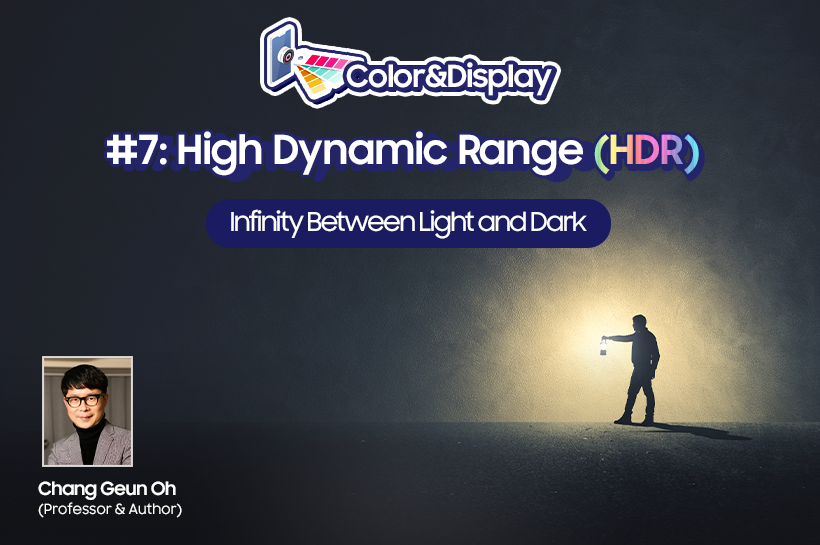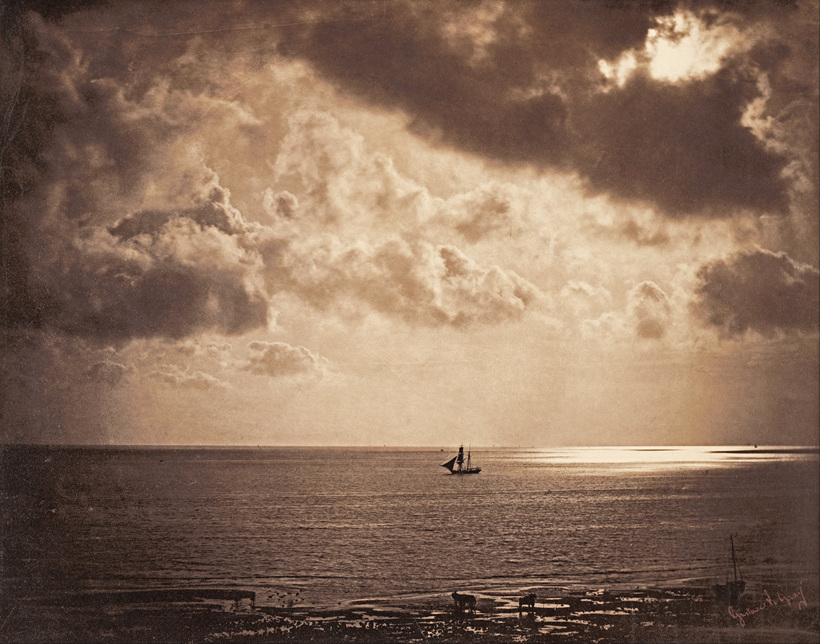
“The darker the night, the brighter the stars.” A lot of lectures, essays, and lyrics have quoted this famous saying as it is or in a modified version. Some speculate that this famous saying originated from Fyodor Dostoevsky's book whereas others contend that it is a poetic verse by Apollo Maykov, a contemporary of Dostoevsky. Typically, this phrase serves as an allegory, describing darkness as sin and light as the grace of God; to researchers studying color, it’s about color contrast ratio and luminance. Luminance is not brightness in case you were wondering. It is the condition of radiating light, which is relative.
Think about it: When you light a candle, it seems ‘brighter’ in a dark room compared to that underneath a lamp and even the brightest lamp can’t compete with sunlight. However, when you’re walking in the middle of nowhere late at night, you’ll welcome even the tiniest glow of light as a sign of salvation.
It is said that Dostoevsky survived the four years of exile in Siberia reading his New Testament Bible late at night. Every verse he consumed in that dim reality at prison camp probably set his soul alight and shaped his journey into becoming one of the greatest figures in world literature.
A candle emits light of roughly one candela (cd), which is a measurement of the luminous intensity by a lighting device in a particular direction. The word ‘candela’ literally meant ‘candle’ in Portuguese (‘candeia’) but later became used synonymously as ‘kandelaar’, a portable lighting device that Dutch merchants helped distribute across different parts of the world. Kandelaar lights emitted luminous intensity of about 5cd by mixing carbide with water, which created highly combustible acetylene gas.
The fact that it was brighter than a typical candle and lasted 7 hours once lit made it a stable item in various environments - from the 19th century factories to early car headlights. A legendary Korean writer, Hyerin Jeon, even mentioned the gas lamps in her writing, referring to them as lemon-colored lights in heavy fog during her time in Munich, Germany.
Surprisingly, Germany continued to use fluorescent lamps for street lighting even until the 2000s. Thanks to COVID19, most of us haven’t been traveling much but those visiting Germany may be shocked by the dark alleys. For instance, Korea is known as the ‘city that never sleeps’: Strong lighting on every corner of the city creates harsh silhouettes of shadows overlapping each other haphazardly. Truth is, there are endless gradations between the lights and shadows, yet we only perceive them as ‘bright’ or ‘dark’ based on certain conditions.

Relative Lightness and Darkness?
Display brightness matters in a reality where people spend hours on their mobile devices and smartphones are considered as a lifeline. You’ll most likely experience eye strain when the display is either too bright or too dark compared to the light in your room. Brightness as we perceive it is subjective, but display brightness is not - it’s precise.
First of all, you have to understand illuminance. It’s the measurement of how much of the light that goes straight from the light source is projected in a certain area of space. The illumination of 1 m² equals 1 lux (lx) or one lumen per square metre (lx=1 lm/m²). Lumen (lm) is the measure of brightness from a light source, which you might have noticed being used to describe light bulb brightness in stores. Standard 60-watt incandescent bulbs, which are hard to come across nowadays, have been replaced with LED bulbs, which draw only 9-watt (about 680lm) of power. It’s an energy-efficient choice with more light to enjoy for users.
In terms of the Color Rendering Index for LED light bulbs, think of it as a measurement of light in relation to how it affects color appearance; the closer it is to 100, you can experience more natural, the accurate output of light (Lighting standards for displays/devices are all based and compared to daylight since the sun is the source of light as we know it).

Luminous intensity and illuminance may be the quantification of light, but luminance is the measurable quality of brightness perceived by the human eye. More specifically, luminance describes the measurement of the amount of light reflected from a surface/area. It depends on how ‘bright’ it appears to us. High luminance will make an object seem ‘bright’ in our eyes, so even with the same source of light and light intensity, objects tend to appear ‘brighter’ when they are smaller in size.
The SI unit for luminance, which measures the brightness levels of displays, is candela per square meter (cd/m2) and nit for non-SI term. However, it’s quite the challenge to be precise with luminance. For example, for LCDs, it’s difficult to measure the exact amount of light emitted from backlight after it passes through multiple layers such as filter/surface films and finally reaches human eyes. Details such as eye size, angles, and distance from the screen all contribute to the outcome, making it impossible to capture the subjectivity of luminance into a single number.
Illuminance is measured as the amount of light striking a surface, whereas luminance defines how bright we perceive the light that is reflected off. Pure whites and perfect blacks can be realized with high luminosity emitted per unit surface area. As the popular adage goes: “The darker the night, the brighter the stars” and vice versa.
Dynamic Range with HDR
In photography, a wide dynamic range captures the full contrast between the darkest and brightest colors. A greater range of tonal detail from pure white to perfect black creates a finer, expressive image. There are various reasons as to why contemporary digital video production looks better than old movies/animations, but advancements in dynamic range definitely contributed to the lifelike and expressive motion pictures we showcase today.
However, expressing the range of tones depends on display devices. Displays with 8-bit color graphics work with RGB using 256 levels per channel. A range of 256 levels looks sufficient, however, the staircase effect, also known as Jaggies, might occur as a consequence of limited range of tones and pixelated images are massive fails in terms of ‘natural’ reproductions. 8-bit worked on previous models of televisions and monitors used by our past generation, but demand for high image resolutions drove the need for updated dynamic range.
10-bit works with RGB using 1,024 levels per channel. The latest 12-bit color depth takes things four times further with 4,096 levels. Considering the fact that ultra-high definition (3840x2160P) resolution is exactly four times that for full high definition (1920x1080P), the contrast ratio between the darkest and brightest color tones should also be upgraded.

In the era of ultra-high definition (UHD), high dynamic range (HDR) was aptly introduced as the new standard. At first, it was all about incremental innovation, focusing on high-resolutions and color spaces. We witnessed evolutions of resolution from 2K, 4K, to 8K and wide color gamut (WCG) after the International Telecommunication Union (ITU) posted its recommendation for Rec.709, Rec.2020, Rec.2100. Even though people discussed changing HDR standards for a while, it wasn’t until the advent of Rec.2100 in 2016 when industry expectations of HDR for Ultra HD became clearer.
However, Rec.2100 standards still face criticism due to the fact that existing standard dynamic range (SDR) and high dynamic range (HDR) compatibility has to be secured. The perceptual quantizer (PQ) published by the Society of Motion Picture and Television Engineers (SMPTE) and hybrid log–gamma (HLG) jointly developed by the BBC and NHK are required. Since we work with colored images/videos on displays, not only bit depth (ex: 10-bit image) but also the accurate portrayal of color space is essential.

Light and color brightness are highly correlated factors in display devices. Did you know that the combination of red, green, and blue in maximized intensities makes white, whereas mixing RGB colors in minimized intensities produces black? Rec.2100 has set industry standards for HDR transfer functions: ➀ The ‘whites’ on display should be more than 1000 cd/m2 ➁ The ‘blacks’ on display should be equal to or less than 0.005 cd/m2.
If you happen to have a Samsung Display OLED nearby, you’ll understand why people commend it with “blacker blacks” and “brighter whites”. Its self-luminous pixels create deeper expressions of black. Unlike LCDs that use backlight, OLED panels switch off pixels completely when expressing black. This perfect black enhances bright color expression too.
Isn’t it enchanting how the latest advancements in display technology can be summarized with Dostoyevsky's quote: “The darker the night, the brighter the stars”?

